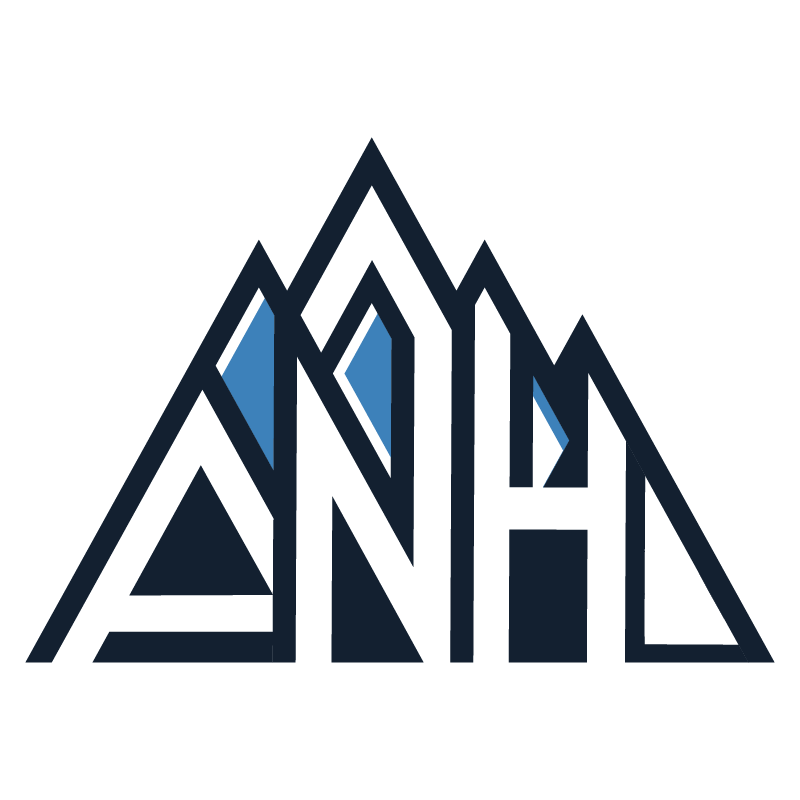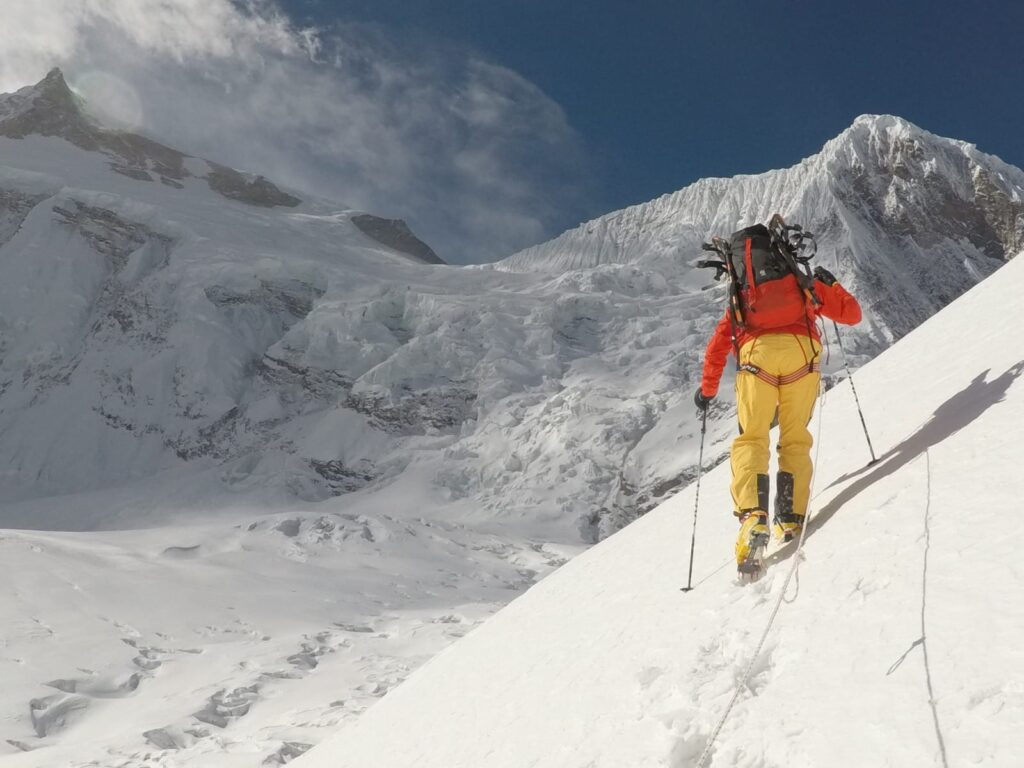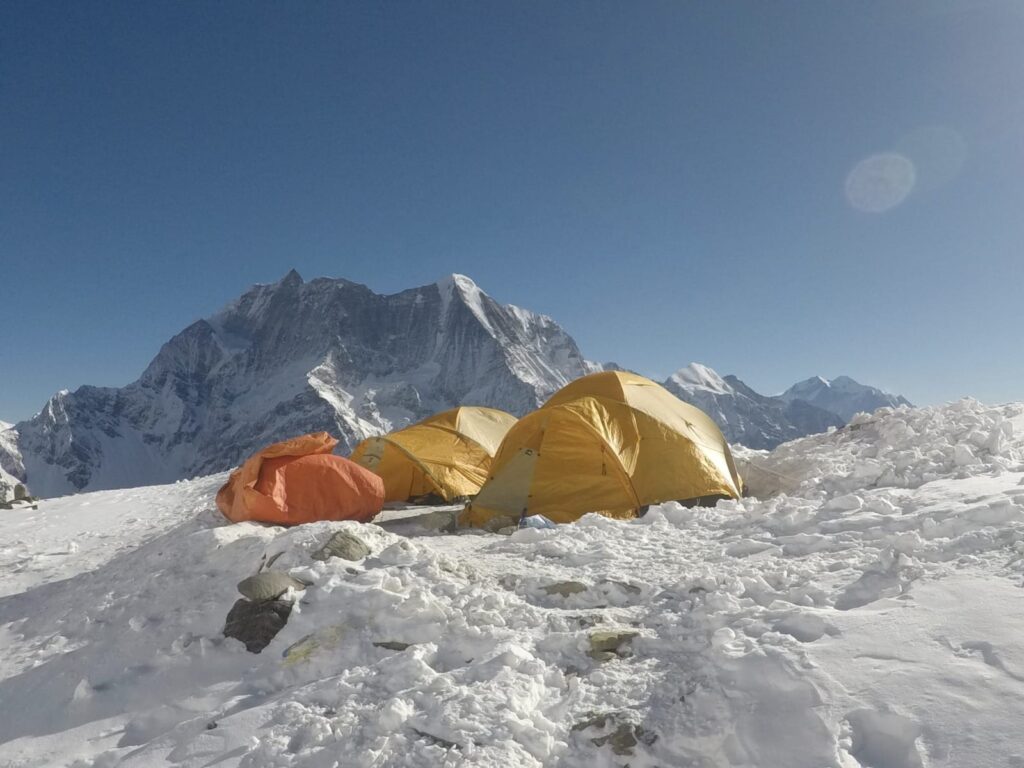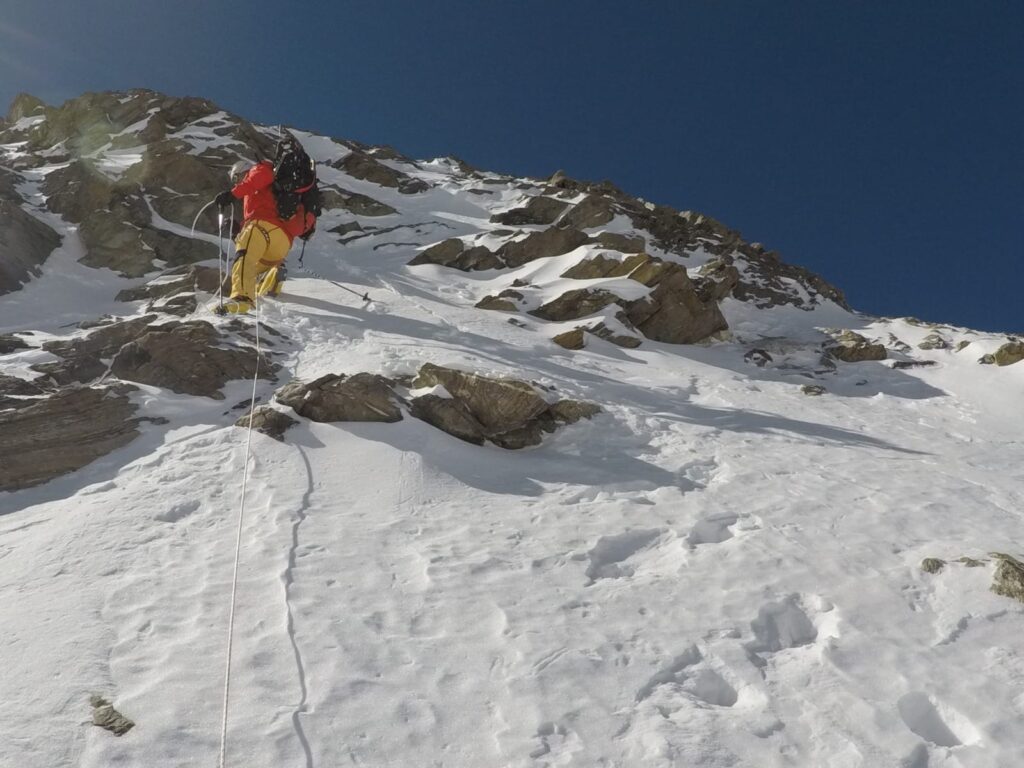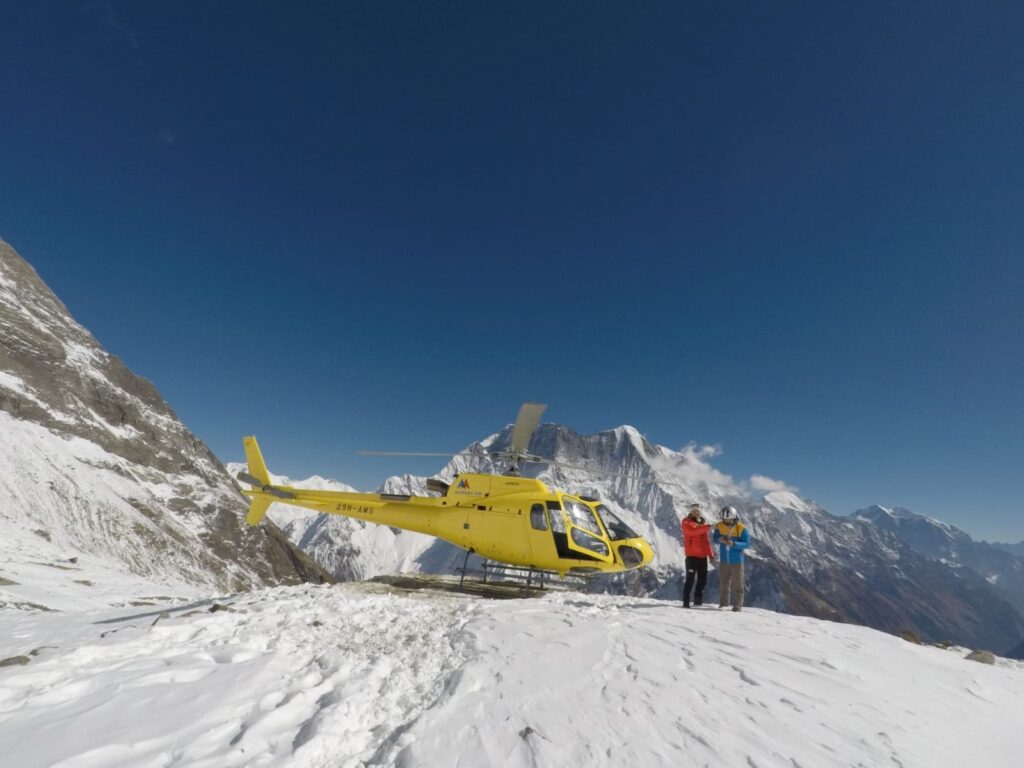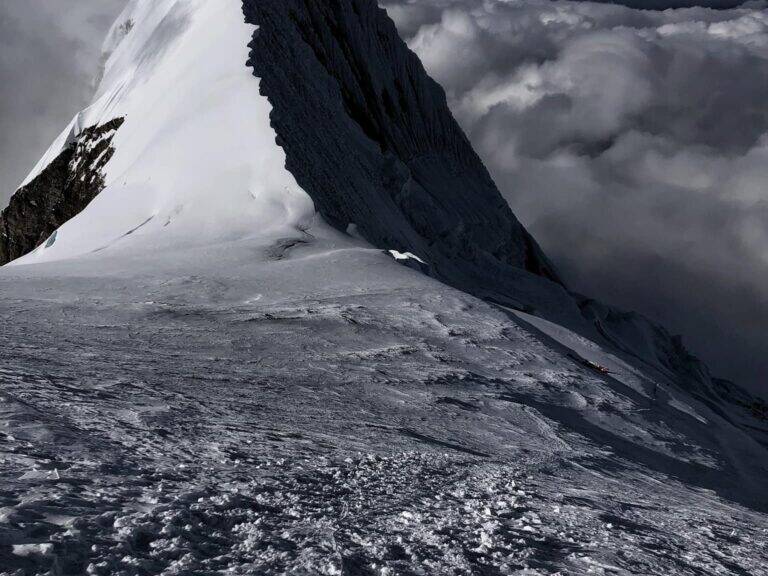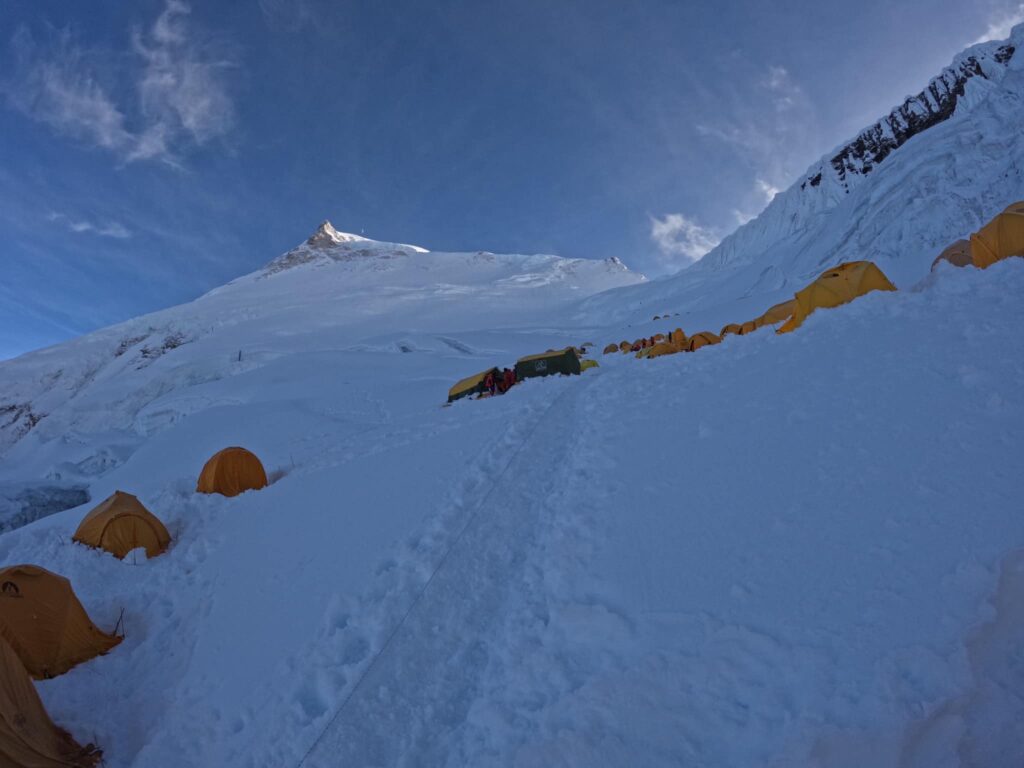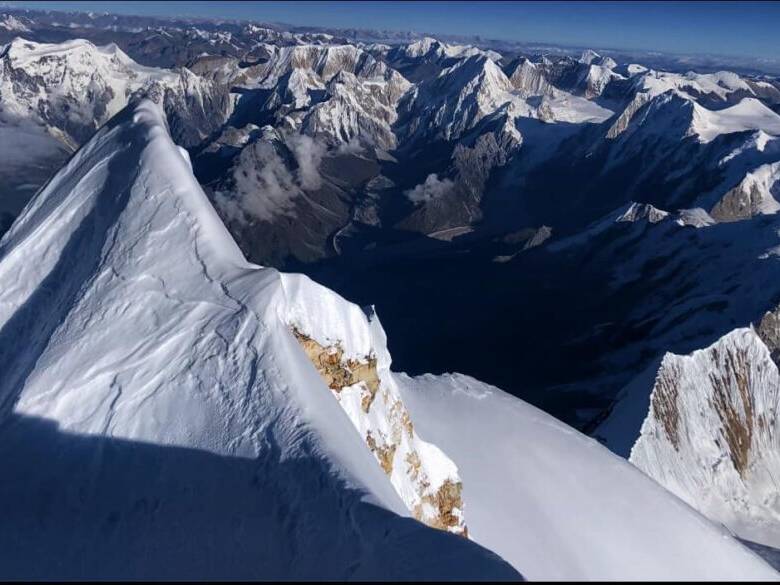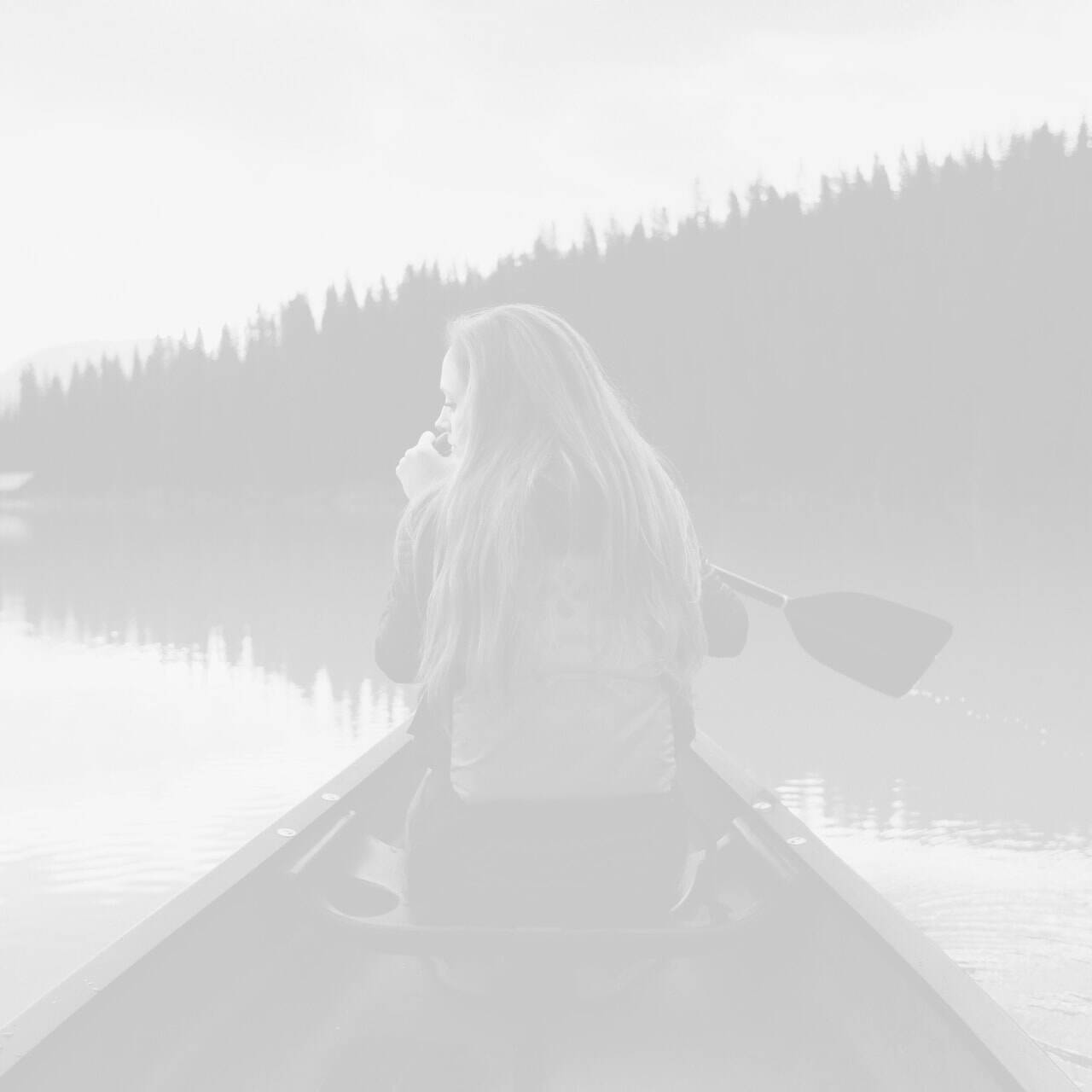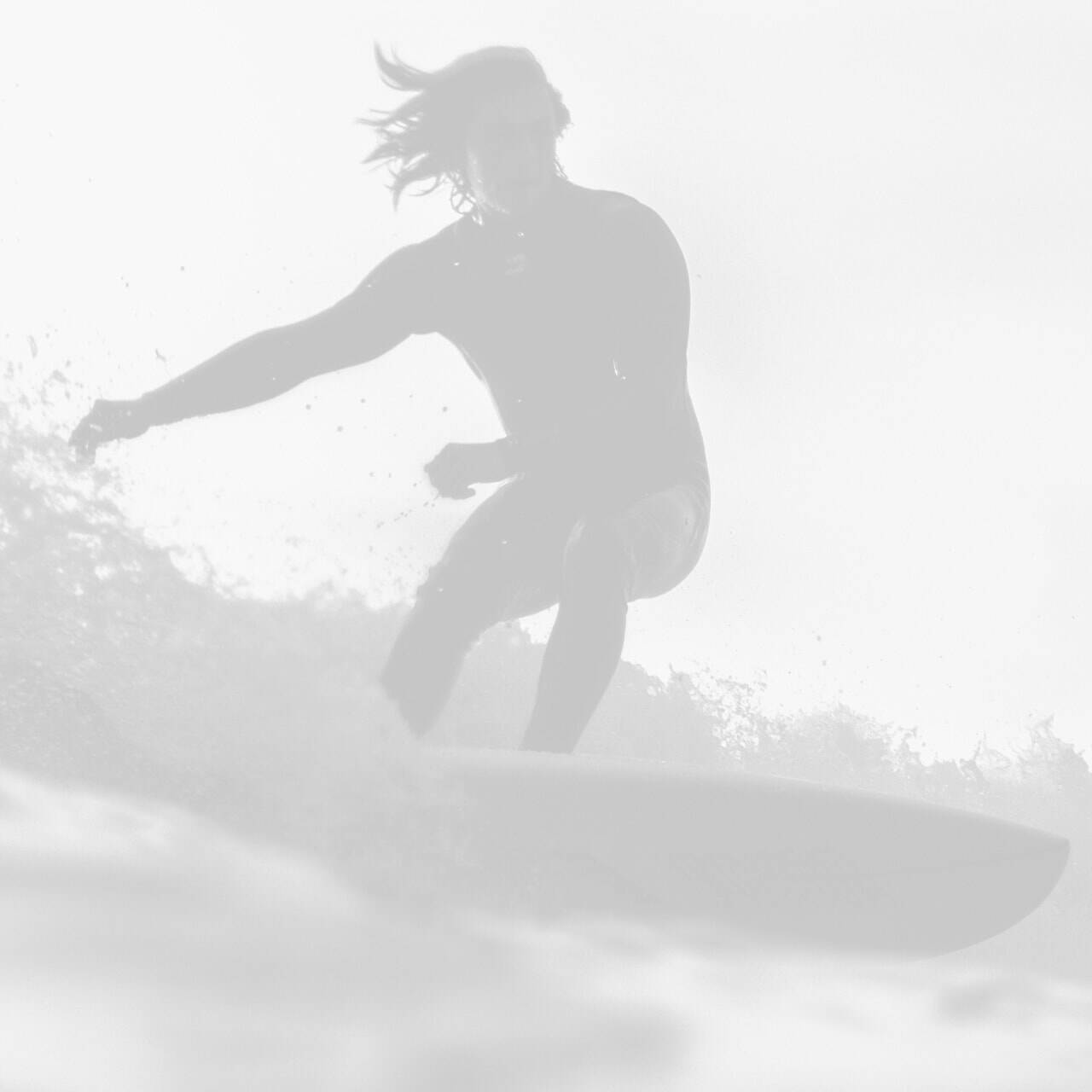Manaslu Expedition
Manaslu is the world’s eighth-highest peak at an altitude of 8,163 meters (26,781 ft). Located in central-western Nepal, it is part of the Mansiri Himal range of the Himalaya. The Sanskrit word manasa means “intellect” or “soul,” hence the name Manaslu translates to “mountain of the spirit”. It is located at about 64 kilometers east of Annapurna.
Manaslu is the world’s eighth-highest peak at an altitude of 8,163 meters (26,781 ft). Located in central-western Nepal, it is part of the Mansiri Himal range of the Himalaya. The Sanskrit word manasa means “intellect” or “soul,” hence the name Manaslu translates to “mountain of the spirit”. It is located at about 64 kilometers east of Annapurna. The mountain’s extensive ridges and valley glaciers allow for approaches from many angles, leading to a top that stands dramatically above the surrounding terrain.
After being initially scaled by a Japanese expedition by Toshio Imanishi and Gyalzen Norbu in 1956, the peak has subsequently gained popularity among mountaineers. Extremely steep slopes, erratic weather, and challenging terrain make Manaslu famous for both its magnificent scenery and its challenging climbing conditions. The people also attach spiritual and cultural importance on the mountain, seeing it as a representation of their history and identity. Join us for a once in a lifetime adventure on Manaslu.
Detailed Itinerary
Climbing Manaslu offers a great opportunity for aspiring mountaineers to experience an 8000-meter peak, achievable in about 27 days. Our express programs are designed for those with time constraints who still want to ascend Manaslu, rather than committing to the typical 40-45 day itinerary (we can provide this itinerary on your demand).
Manaslu is an excellent preparation for larger expeditions like Mt. Everest, offering a challenging ascent through the death zone to the summit.
Please note that to participate in our 27-day itinerary, all participants are required to undergo an extensive hypoxic acclimatization and training program for at least 8 weeks, with a maximum recommended duration of 10 weeks, to aid in their adaptation. It is crucial that these targets are strictly adhered to for the success of the express climb.
01
Arrival in Kathmandu (1300m/4,265ft)
Upon arrival at Tribhuvan International Airport, you will be greeted by our staff and transferred to your hotel. In the evening, there will be a welcome dinner and briefing about the expedition.
02
Preparation day for legal formalities, team briefing, and rest (1300m/4,265ft)
Today, we will handle the necessary government paperwork and permits for the expedition. There will be a detailed team briefing to discuss the plan and preparations. You will have the rest of the day to relax and explore Kathmandu.
03
Heli Flight to Samagaun (3,690m/12,106ft)
We take an early morning helicopter flight to the village of Samagaun, which lies at an altitude of 3,690 meters. This scenic flight provides stunning views of the Himalayas. Upon arrival, we will settle into our accommodations and rest.
04
Rest at Samagaun (3,690m/12,106ft)
Today is dedicated to acclimatization, during which you can explore the village and its surroundings. Acclimatization here is crucial as it helps prepare us for the higher altitudes to come.
05
Trek from Samagaun to Manaslu Base Camp (4,800m/15,748ft)
We begin our trek from Samagaun to Manaslu Base Camp. The hike will take us through beautiful alpine landscapes, and we will gradually gain altitude. Our base camp will be set up and ready to welcome us, providing a comfortable place to rest and prepare for the climb.
06
Preparation for Puja Ceremony and rest at Base Camp
This day is set aside for rest and preparation. We will also make arrangements for t-he traditional Puja Ceremony, which is very important, as we pray to the mountain gods for a safe climb and return.
07
Puja Ceremony, gear, and equipment preparation for rotation
We will participate in the Puja Ceremony to seek blessings for a safe expedition. Afterward, we will prepare our gear and equipment for the rotation climbs. This day also includes final checks and preparations for the ascent.
08
Climb to Camp I, overnight at Camp I (5,600m/18,373ft)
We begin our climb to Camp I, located at 5,600 meters. The ascent will be challenging but rewarding. We will spend the night at Camp I.
09
Rotation to Camp II and return to Camp I
Today, we will climb to Camp II to familiarize ourselves with the route and the conditions, then return to Camp I for the night. This helps with acclimatization and prepares us for the subsequent climbs.
10
Climb to Camp II, overnight at Camp II (6,300m/20,669ft)
We ascend to Camp II and spend the night there, further acclimatizing to the higher altitude. The climb involves moderate snow slopes and a steep section above Camp I, taking 5-7 hours.
11
Rest and Acclimatization at Camp II
A day dedicated to resting and acclimatizing at Camp II. This helps our bodies adjust to the higher altitude, improving our chances of success. The views from this camp are spectacular, offering breathtaking sights of the surrounding peaks.
12
Rotation to Camp III (6,900m/22,638ft) and Return to Camp II
We make a rotation climb to Camp III and then return to Camp II to sleep, continuing our acclimatization process. The route involves steady progress on snowy slopes, taking about 4-5 hours.
13
Descend to Base Camp from Camp II
We descend back to Base Camp for rest and recovery. This will help us recuperate and prepare for the final summit push.
14
Rest days
Several rest days at Base Camp to fully recover and finalize preparations for the summit attempt. This period is crucial for building strength and ensuring all equipment is in order.
15
Climb to Camp I (5,600m/18,373ft)
We climb back to Camp I, starting our summit push. This marks the beginning of our final ascent phase.
16
Climb to Camp II (6,300m/20,669ft)
From Camp I, we make our way up to Camp II, moving steadily towards our goal.
17
Climb to Camp III (6,900m/22,638ft)
We continue our ascent to Camp III, where we will rest and prepare for the higher camps.
18
Climb to Camp IV (7,300m/23,950ft)
We push to Camp IV, the final camp before the summit, positioning ourselves for the summit bid. This involves climbing a steep, vertical slope using fixed ropes, taking about 6-7 hours.
19
Summit Day (8,163m/26,781ft) and Return to Camp II or Base Camp
An early start for our summit attempt. We aim to reach the top of Manaslu (8,163m) and then descend to either Camp II or all the way to Base Camp, depending on conditions and individual stamina. The summit climb requires steady progress over snowy/icy slopes, taking 6-8 hours. Our Sherpa team will aim to reach the “true summit,” ensuring a complete and successful ascent.
20
Rest Day at Base Camp
A well-deserved rest day at Base Camp to recover from the strenuous summit attempt. Our base camp team will welcome us with celebrations and a warm meal, marking the success of our expedition.
21
Direct heli flight from Base Camp to Kathmandu (1,300m/4,265ft)
We take a helicopter flight back to Kathmandu from Base Camp, avoiding the long trek out. Upon arrival in Kathmandu, we transfer to our hotel for some rest and relaxation.
24
Extra day in Kathmandu for gear pack up and farewell dinner
An additional day in Kathmandu to pack up gear, relax, and enjoy a farewell dinner with the team, celebrating our achievements. This day also provides time for sightseeing or last-minute shopping.
25
Final departure
Today is reserved for your final departure. Depending on your flight schedule, our staff will transfer you to the airport at least three hours before your flight. Safe travels!
Included in Your Trek Package:
- Arrival & departure transfer from and to the airport & hotels
- Accommodation in Hyatt Regency in Kathmandu (bed and breakfast)
- Teahouse accommodation on full board (breakfasts, lunches & dinners) during the trek
- Base Camp accommodation in an individual box tent with a comfortable mattress
- Base Camp Service (shared with the group) including a kitchen tent with the cook, kitchen boy, dining tent with tables and chairs, shower tent, toilet tent, storage tent, gas heater, etc.
- High altitude food and Epi gas burner for the members and staff for their stay at high camps
- 5 oxygen bottles, mask, and regulator for members (1 bottle from Camp II to Camp III, 1 bottle to move to Camp IV, and 3 bottles for summit push at 4 litres). Extra mask and regulator provided if needed. 2 bottles each for climbing Sherpa and guide
- Heli flights: Kathmandu – Sama Gaun & Base Camp – Kathmandu for members
- 1 climbing Sherpa and a guide for each climbing member during the expedition
- National Park Permit and any other charges related to permits
- Required number of porters with wages, equipment, medical, and accidental insurance
- Equipment allowance and insurance for the climbing Sherpas, cooks, and kitchen staff involved in the expedition
- Helicopter rescue insurance for high altitude climbing Sherpa, cook, and staff
- Baggage allowance of 40 kg per member carried by the porters
- Medical kit carried by the Guide/Sardar
- Walkie-talkie for easier communication during the expedition
- Garmin InReach satellite phone (charges apply)
- Rope fixing charge
- Salary & load carrying bonus for Sherpa (exclusive of the summit bonus)
- Farewell dinner at an authentic Nepali restaurant in Kathmandu
- Climbing certificates issued by the respective body of the Nepal Government
- Applicable local and government taxes
- International airfare to and from Kathmandu
- Nepal visa fee
- Travel & medical insurance including insurance for emergency rescue & evacuation
- Lunches and dinners in Kathmandu
- Permits for client’s radio set or satellite phone
- Summit bonus for Sherpas & tips for local staff
- Cost for the daily weather forecast
- Tips for the staff to show gratitude
- Any extra cost arising out of natural calamities or cancellation of the program
- All other items not mentioned in the list of ‘Inclusions’
Packing List
Technical Gear:
- Ice axe with a leash
- Crampons
- Climbing harness
- Carabiners
- Ascender (Jumar)
- Belay device
- Prussiks
- Trekking poles
- Helmet
Headwear:
- Headlamp (min. 200 lumens) with sufficient batteries (Li-Ion)
- Sunglasses (polarized/UV protected)
- Woolen cap
- Sunhat
- Buff scarf
- Balaclava
Bodywear:
- Liner socks
- Woolen socks/trekking socks
- Summit socks (8000er series)
- Down suit
- Down jacket
- Down pants
- Gore-Tex set / Hard-shell set
- Insulated mid layer
- Fleece jacket
- Thermal set
- Quick dry (half and full sleeved)
- T-shirts
- Trekking trousers
- Additional as per necessity
Handwear:
- Liner gloves
- Fleece gloves
- Expedition Gore-Tex gloves (heavy duty)
- Mittens
Footwear:
- Trekking shoes
- Expedition climbing shoes (8000er series)
- Camp shoes/slippers
- Gaiters
- Liner socks
- Woolen socks/trekking socks
- Summit socks (8000er series)
Personal Kit:
- Trekking backpack
- Expedition backpack
- Sleeping bag (-20℃ for base camp)
- Sleeping bag (-40℃ for higher camps)
- Sleeping mattress
- Hygiene kit (toiletries)
- Sunscreen (min. 60 SPF)
- Lip guard with SPF
- Water bottle
- Thermos
- Personal medications
- Personal first aid kit
- Camera and associated gear
- Camp knife/multi-tools
- Binoculars/magnifiers
- Personal reading accessories
- Dry bag/compression bags
FAQ
From our past clients on similar treks.
It’s considered an intermediate trek. A good fitness level and mental preparation are key, but with a proper itinerary and support, most people can complete it.
Everest Base Camp sits at 5,364 meters (17,598 feet).
Our itinerary is designed to allow proper acclimatization, and our guides are trained to monitor for symptoms. In emergencies, we will arrange safe descent and medical support.
Yes, comprehensive travel insurance with emergency evacuation coverage is mandatory.
We welcome solo trekkers and will match you with a group if you prefer shared experience.
Spring (March–May) and Autumn (September–November) are ideal for weather, visibility, and trail conditions.
Yes. We handle all required trekking permits for Sagarmatha National Park and Khumbu Rural Municipality.
“ I have been on many workshops with great photographers but non has ever come close to being this great. Selena took into consideration the clouds, the weather, the right times of the day and hit a home run every time. Amazing! ”
Nathan Watkins
LONDON
“ I signed up for my first workshop with Selena with a love of photography, but as a novice of real camera equipment and no experience. Somehow I convinced Selena to take me on, and he promised to help me learn to use the gear. ”
Elise Brooks
BERLIN
“ Selena private workshops were in all respects a highly rewarding experience. Her photographic expertise as well as his extensive knowledge of the street area proved tremendous assets on both the sunset and sunrise street workshops. ”
Emerson Taylor
AMSTERDAM
Ready to begin your journey?
Let’s talk about your goals, your questions, and the trek that might change everything.
